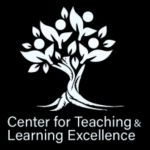
Assessments are typically defined as either traditional or authentic. Although we present them as two separate models, it is important to note that they are often most effective when they are used in complementary ways. Both types of assessments can add value to your courses and support more holistic student learning.
Traditional assessments are used throughout all levels of education and can provide important and relevant data about student learning. Most students and educators are familiar with traditional assessments and standardized testing, and in the classroom, they often include multiple choice exams, true/false questions, and matching quizzes.
Traditional assessments have several benefits. They allow us the opportunities to:
- Standardize grading and assessments.
- Validate and use norm-referencing.
- Measure and compare students’ knowledge.
- Automate the grading process.
However, traditional assessments also present unique problems in education. These types of assessments may be perceived as inauthentic and decontextualized from practical applications. They also provide only a snapshot of student learning, may separate the learning process from the assessment process, and due to their standardization, they may present students with more opportunities to engage in academic dishonesty.
Authentic assessments may be defined by some of their characteristics. They are often rooted in their connections to “real world” applications, their requirements for learners to engage in complex and creative problem solving, and their scaffolded designs that may extend across multiple areas of the course. Authentic assessment is an approach that assesses if learning objectives have been met in the most relevant way.
Some of the benefits of authentic assessments are that they:
- Encourage students to engage in higher order cognitive skills, especially creative thinking and problem solving.
- Simulate contexts that are relevant to the students’ professional and personal experiences.
- Allow students to demonstrate proficiencies across multiple skills or tasks.
- Support the construction of knowledge, rather than memorizing or learning only for a test.
While the benefits the authentic assessments are significant, it is important to also consider that they often involve greater time investments from both the faculty and students, require clear connections and mapping between tasks and learning outcomes, and are most effective when feedback is timely, constructive, and frequent. Since formative feedback is essential for authentic assessments, it is important to also consider the use of rubrics.
When building an authentic assessment into your courses, Educause notes that there are “eight critical factors that researchers say must be aligned to ensure a successful learning environment.” These eight factors help to provide the necessary framework to get started. We have included the factors below and have added additional questions for consideration.
- Goals: Are the goals of the learning outcomes, objectives, and tasks clearly aligned?
- Content: Does the content connect with the expected learning?
- Instructional design: Has the course been designed to scaffold and support assessments that may occur over several weeks or modules?
- Learner tasks: What are learners expected to do?
- Instructor roles: What is the instructor expected to do?
- Student roles: What will the student roles be throughout the process? Will those roles change?
- Technologies: What technologies will support learning and facilitate the assignment requirements?
- Assessment: How will the work be assessed?
Article: Final Exams or Epic Finales
- Case studies
- Investigations and reports
- Demonstrations
- Simulations and performances
- Projects
- Portfolios
- What Happens When Students Have More Chances to Master Concepts
- Faculty Focus Live Podcast: Authentic Assessment Strategies: Assessing Learning that Empowers Your Students
- University of Delaware’s Institute for Transforming University Education: Problem-Based Learning Clearinghouse. This website provides examples from more than 30 disciplines and offers filtering options and instructor materials.
- Indiana University’s Center for Innovative Teaching and Learning: Authentic Assessment. IU’s CITL offers an excellent overview of authentic assessment and provides examples from specific classes and suggestions for rubrics.
- Educause’s Learning Initiative (ELI) article: Authentic Learning for the 21st Century
- Wiley’s Authentic Assessment in the Online Classroom


